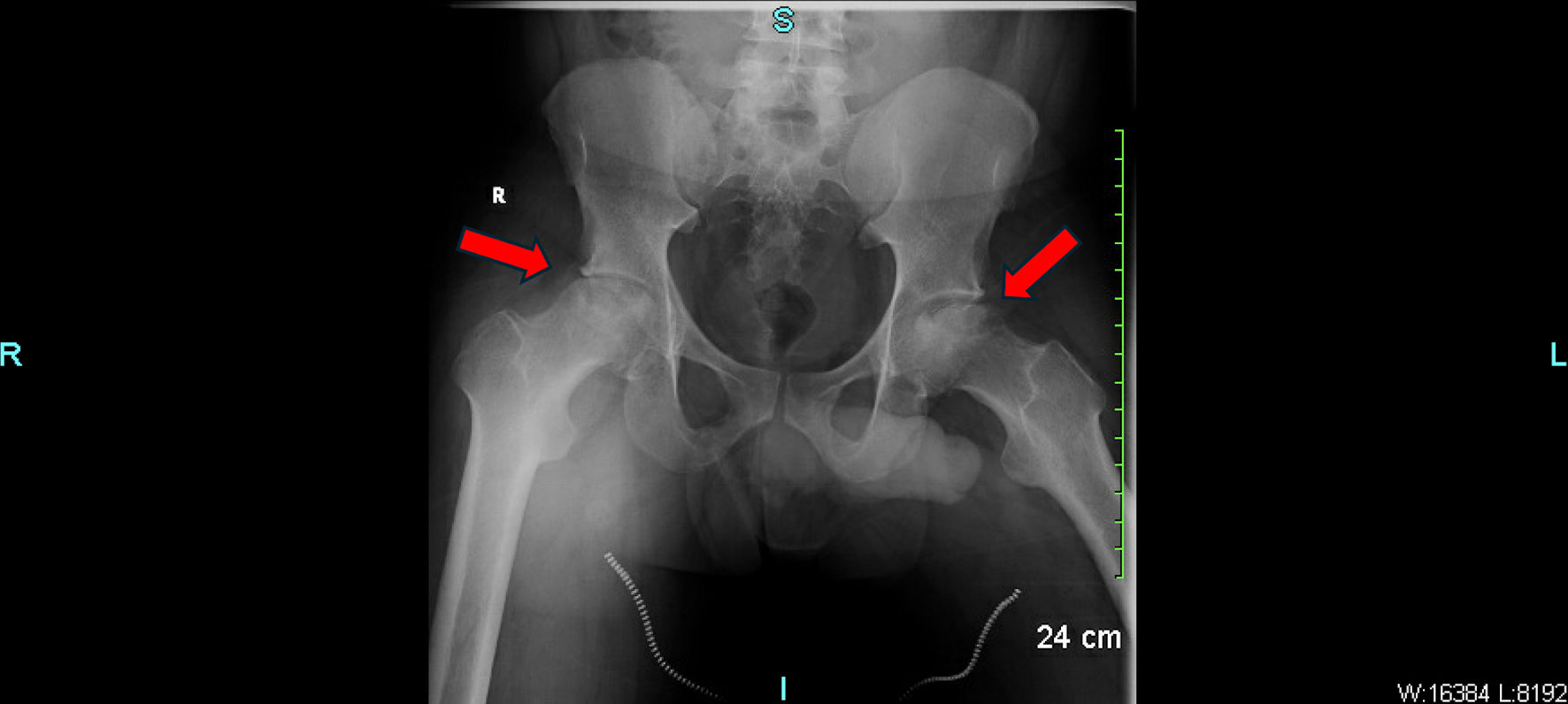Bilateral Avascular Necrosis of the Hips in a Patient With Sickle Cell Trait and Chronic Alcohol Use
DOI:
https://doi.org/10.14740/jh2084Keywords:
Sickle cell trait, Avascular necrosis, Femoral head, Osteonecrosis, Chronic alcohol use, Hip painAbstract
Sickle cell trait (SCT) is generally considered a benign carrier state, unlike sickle cell disease (SCD), which is frequently associated with complications such as avascular necrosis (AVN). While AVN affects approximately 30% of patients with SCD, it is rarely reported in individuals with SCT and is not well understood. A 29-year-old African American male with SCT presented with progressively worsening hip pain. He reported chronic heavy alcohol use but denied steroid use, trauma or previous sickle cell crises. Physical exam demonstrated severely limited hip range of motion and antalgic gait. Laboratory studies were unremarkable aside from elevated C-reactive protein. Radiographs revealed bilateral femoral head AVN greater than stage II, with partial collapse on the left. He was managed conservatively with nonsteroidal anti-inflammatory drugs (NSAIDs), physical therapy, and counseling on alcohol reduction, and was referred to orthopedics for long-term management. Although rare, AVN can occur in individuals with SCT, particularly when compounded by modifiable risk factors such as chronic alcohol use, which can impair bone remodeling, promote fat embolism, and exacerbate microvascular compromise from intermittent sickling. It highlights the importance of early recognition and intervention in patients with unexplained joint pain, and that clinicians should maintain a high index of suspicion for AVN in SCT patients, especially in the presence of other comorbidities and risk factors.

Published
Issue
Section
License
Copyright (c) 2025 The authors

This work is licensed under a Creative Commons Attribution-NonCommercial 4.0 International License.








